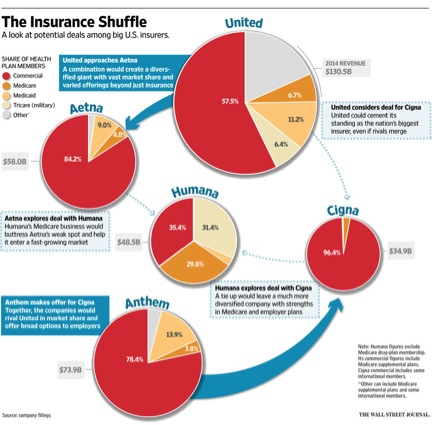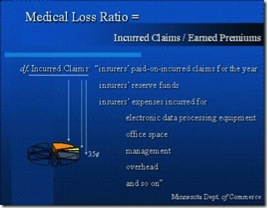It has become clear to me that both the Democrats and the Republican establishment had no intention of repealing and replacing Obamacare.
Democrats had no intention of repealing or replacing Obamacare because. President Obama is their hero. In fact, he has made the most progress in putting America on the road to a European socialist state.
The problem is European socialism has failed. Europe is much closer to bankruptcy than America is.
Democrats also had no intention of offering any suggestion to Donald Trump to fix Obamacare. Why? They want to destroy his presidency.
Donald Trump is a direct threat to the cushy swamp both the Democratic and Republican establishment has built over the last 50 years.
In addition to this neither, the Democrats nor the Republicans understand the medical care system.
Neither party has a clue about the importance of the physician patient relationship.
Donald Trump represents a direct threat to the Republican establishment’s power over consumers. They too want to destroy his presidency. However, it is essential that the Republican establishment’s goals are not obvious to the public.
Neither party wants to empower the consumers. I believe in order for healthcare reform to be successful it must be consumer driven.
The goal of congress is to focus on making consumers dependent on the government through government control of the healthcare system.
It is strange that one or two people have been positioned to control the Republican Party. The tea party members of the senate are slowly replacing the Republican establishment.
I am afraid that in the next six months Obamacare is going to become unraveled to the grief of the public.
According to the Democrats the only solution is to paste it together and pour money into a single party payer system because “it works!!” in Europe and Canada.
A single party payer system really doesn’t work from and financial and quality of care point of view when studied carefully. In all the countries using with a single party payer system the system appears to work as it plunges each country into further debt.
I have tried to encourage a consumer driven health care system to replace the system controlled and dominated by the government. The government has given the healthcare insurance industry the ability to profit as a result of government bureaucratic inefficiency.
Only a market driven system at the expense of the insurance industry’s profit and government control of Americans’ freedom to choose will work.
I have outlined this system in detail in my blog. All one has to do is read the summary category of the blog to understand the system.
He makes very important points that support my ideal medical saving accounts.
His problem is he does not recognize the fact that congress is not interested in creating an efficient system.
It is important to most Democrats and some Republicans that government control the healthcare system.
My view is that with the tremendous increase in obesity and the resulting increase in chronic disease the cost of healthcare is going to increase markedly over the next decades.
In order to reduce the cost of care government should concentrate its energy in lowering the cost of care by reducing obesity in America. This will decrease the onset of chronic diseases and in turn decrease the cost of medical care.
It can be accomplished by giving patients at all income levels financial incentives to become responsible for their health and healthcare dollars.
Scott Atlas’ article in the Wall Street Journal covers most of the points I have made in the past.
I am happy that someone is starting to agree with my solution.
Mr. Atlas is correct when he says;
“But their whole focus (in the healthcare debate) has been wrong. The debate centered, like ObamaCare, on the number of people with health insurance. A more direct path to broadening access would be to reduce the cost of care. This means creating market conditions long proven to bring down prices while improving quality—empowering consumers to seek value, increasing the supply of care, and stimulating competition.”
I have been saying this for years. However congress has refused to listen.
“First, equip consumers to consider prices.”
Critics always claim this is unrealistic: Are you supposed to shop around from the back of the ambulance?
The critics use the ambulance excuse argument to eliminate the possibility of consumers using their own judgment to make price decisions.
“But emergency care represents only 6% of health expenditures.”
“For privately insured adults under 65, almost 60% of spending is on elective outpatient care. “
The critic’s argument is that consumers do not know how to shop prices. Consumers are smarter than the critics think. It would be easy to teach consumers to shop prices.
An internet site could help like Tire Rack site teaches people how to shop for tires.
At present consumers have no incentive to shop prices.
If they had a financial reward to shop prices they would not overuse the healthcare system.
My ideal medical saving account provides that financial incentive to not overuse the healthcare system. The many articles about my ideal medical saving accounts are attached to this link.
http://stanfeld.com/?s=my+ideal+medical+savings+accounts
“ Likewise, nearly 60% of Medicaid money goes to outpatient care.”
Medicaid patients also overuse the healthcare system.
“ For the top 1% of spenders—a group responsible for more than a quarter of all health expenditures—a full 45% is outpatient.”
These patients can easily be identified as outliers. Their problems can be dealt with separately. The majority of the consumers should not be penalized for the small percentage of outliers.
“Giving consumers an incentive to consider price when seeking such care would make a huge difference in the cost of medical care.”
Obamacare provided no incentives to save money.
“ObamaCare moved in the opposite direction, shielding consumers from having to care about prices. Its broad coverage requirements and misguided subsidies encouraged bloated insurance policies, furthering the misguided idea that the purpose of coverage is to minimize out-of-pocket costs.
When the insurer picks up nearly the entire tab, patients have little reason to consider costs, and doctors don’t need to compete on price.”
Effective healthcare reform would put patients in charge of their own spending. It would provide a way for consumers to concentrate on being well while giving them a financial incentive to pay less for their healthcare coverage.
Finally someone has seen the wisdom of creating a system of having consumers to be in charge of their health and healthcare dollars.
I have provided a system of healthcare that for a consumer driven system.
Mr. Atlas outlined such a system that matches my system of a consumer driven healthcare system using my ideal medical saving account.
It is unfortunate that our elected congressional establishment has no interest in empowering consumers to control the healthcare system even though it would decrease the cost of healthcare markedly.
The establishment is terrified of Donald Trump and his notion for empowering consumers.
The opinions expressed in the blog “Repairing The Healthcare System” is, mine and mine alone.
All Rights Reserved © 2006 – 2017 “Repairing The Healthcare System” Stanley Feld M.D.,FACP,MACE
Please have a friend subscribe

